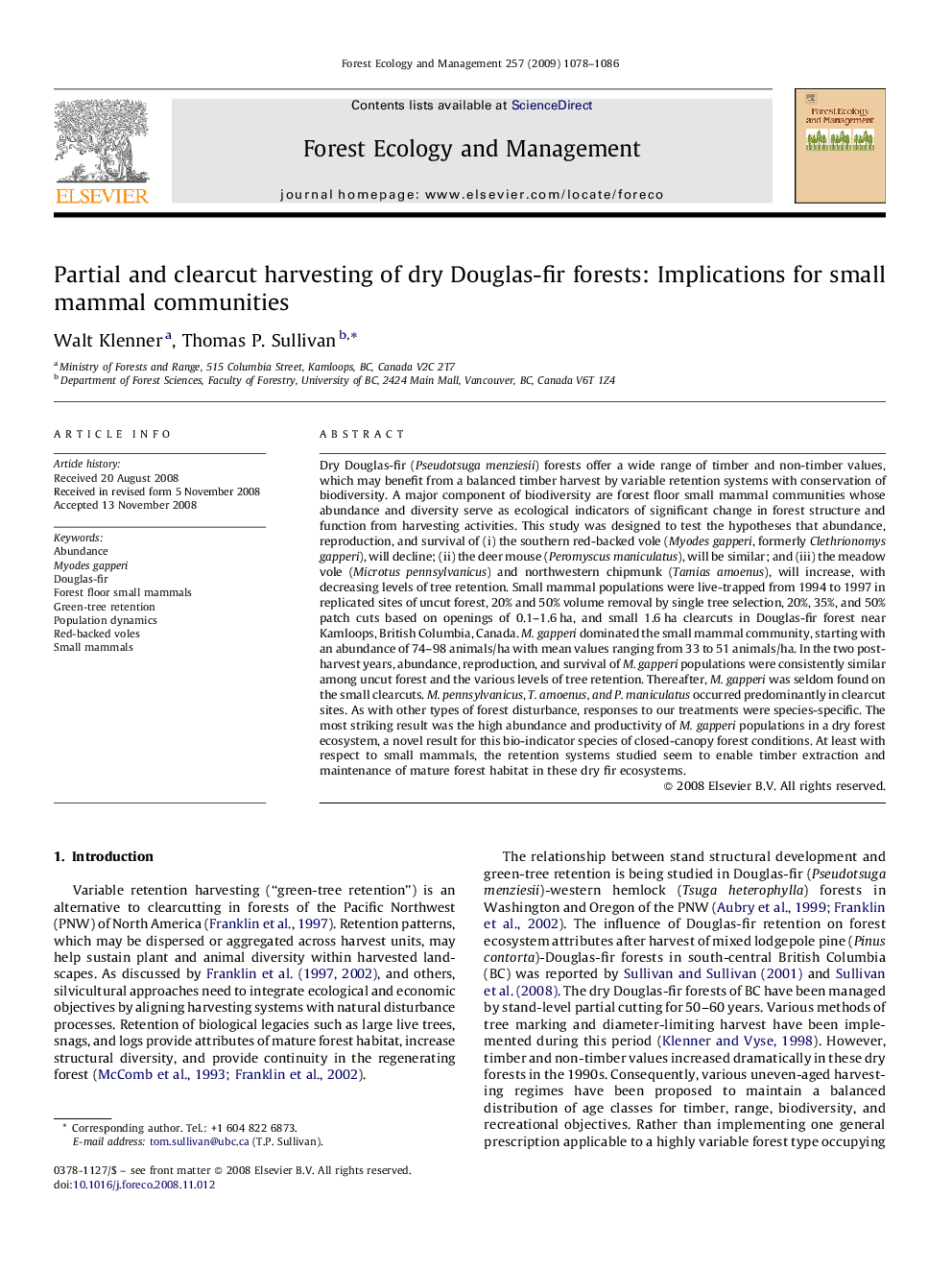| کد مقاله | کد نشریه | سال انتشار | مقاله انگلیسی | نسخه تمام متن |
|---|---|---|---|---|
| 89116 | 159332 | 2009 | 9 صفحه PDF | دانلود رایگان |

Dry Douglas-fir (Pseudotsuga menziesii) forests offer a wide range of timber and non-timber values, which may benefit from a balanced timber harvest by variable retention systems with conservation of biodiversity. A major component of biodiversity are forest floor small mammal communities whose abundance and diversity serve as ecological indicators of significant change in forest structure and function from harvesting activities. This study was designed to test the hypotheses that abundance, reproduction, and survival of (i) the southern red-backed vole (Myodes gapperi, formerly Clethrionomys gapperi), will decline; (ii) the deer mouse (Peromyscus maniculatus), will be similar; and (iii) the meadow vole (Microtus pennsylvanicus) and northwestern chipmunk (Tamias amoenus), will increase, with decreasing levels of tree retention. Small mammal populations were live-trapped from 1994 to 1997 in replicated sites of uncut forest, 20% and 50% volume removal by single tree selection, 20%, 35%, and 50% patch cuts based on openings of 0.1–1.6 ha, and small 1.6 ha clearcuts in Douglas-fir forest near Kamloops, British Columbia, Canada. M. gapperi dominated the small mammal community, starting with an abundance of 74–98 animals/ha with mean values ranging from 33 to 51 animals/ha. In the two post-harvest years, abundance, reproduction, and survival of M. gapperi populations were consistently similar among uncut forest and the various levels of tree retention. Thereafter, M. gapperi was seldom found on the small clearcuts. M. pennsylvanicus, T. amoenus, and P. maniculatus occurred predominantly in clearcut sites. As with other types of forest disturbance, responses to our treatments were species-specific. The most striking result was the high abundance and productivity of M. gapperi populations in a dry forest ecosystem, a novel result for this bio-indicator species of closed-canopy forest conditions. At least with respect to small mammals, the retention systems studied seem to enable timber extraction and maintenance of mature forest habitat in these dry fir ecosystems.
Journal: Forest Ecology and Management - Volume 257, Issue 3, 10 February 2009, Pages 1078–1086